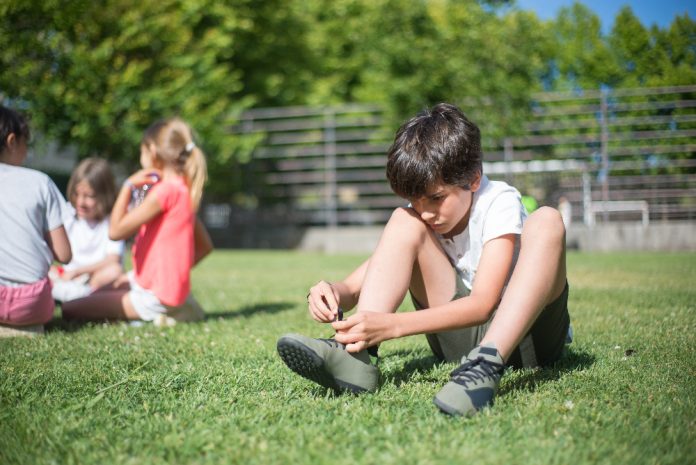Children with dyspraxia have successfully learned to complete everyday tasks they normally struggle with by watching videos of other children performing them, researchers at Manchester Metropolitan University have found.
Dyspraxia or developmental co-ordination disorder (DCD), which affects around 5 to 6% of children in the UK, causes difficulties with movement co-ordination and can make tasks which need fine motor skills, such as tying shoelaces and opening bottles, extremely challenging.
Researchers created videos of four different everyday tasks being carried out successfully by another child: tying shoelaces, using cutlery, buttoning a shirt and cup stacking. These were filmed from a point-of-view, or first-person perspective, using head cams.
While watching the videos, the participants in the study were encouraged to imagine that they were watching themselves perform the movements that they observed.
Twenty-eight children, aged 7-12, took part in the study. The team found that children with DCD who had previously struggled with the tasks, showed a significant improvement after practising with the videos, led by their parents, four times a week over a four-week period.
Now researchers hope to develop a video library of common tasks such as opening packets and using a ruler and make them accessible online to parents of children with DCD.
A key finding was that, for children who were unable to tie their shoelaces at the start of the study, there was an 89% success rate with those in the group which had used the videos to learn this skill, compared to only a 44% success rate in the control group who had just physically practiced, which is the conventional treatment.
One child was able to fasten their shirt buttons in 42 seconds after the four weeks, compared to eight minutes at the start of the study.
Senior Lecturer in Psychology Dr David Wright, who led the research, along with colleagues from the Manchester Metropolitan University Institute of Sport and Faculty of Health and Education, said: “Children with DCD and their families can wait around two to three years to get a diagnosis, so that can be very frustrating for them as it’s a substantial part of their lives where the children are not getting the support they need and they can be left behind by their peers.
“We found that parents can use these videos to help their children learn complex skills more effectively than they would normally, and so they could be really helpful whilst families are waiting to get a diagnosis and more formal support.”
The videos use commonly used mental training techniques shown to be effective in children with DCD: Action Observation (AO) and Motor Imagery (MI) which are known to promote activity in regions of the brain which are underactive in children with DCD. However, this is the first time the techniques have been used outside a lab and in a home setting, to show improvements in everyday tasks.
David added: “The key thing with the videos was that they showed the task from the child’s own viewpoint rather than a confusing angle of someone else performing the skill. Also, they were filmed using a skilled child model, which was easier for the children to relate to than an adult who would look completely different when doing the task.
“The videos almost give the illusion that you’re executing the movement yourself and we encouraged this by asking participants to try to step-in to the video and imagine the feeling of doing the movements whilst they watched them.”







